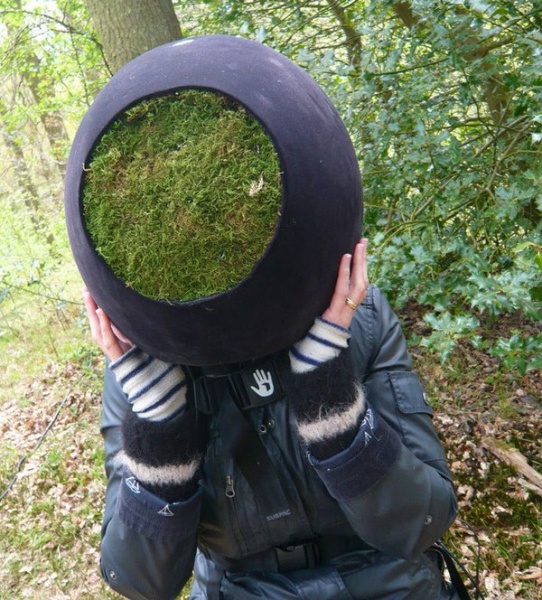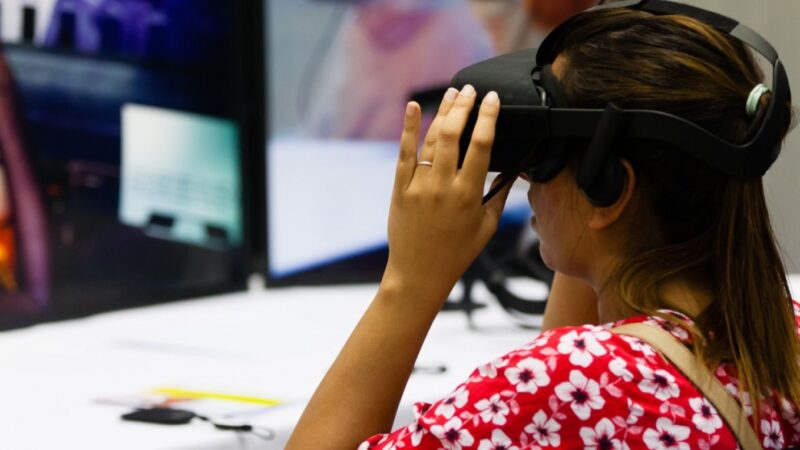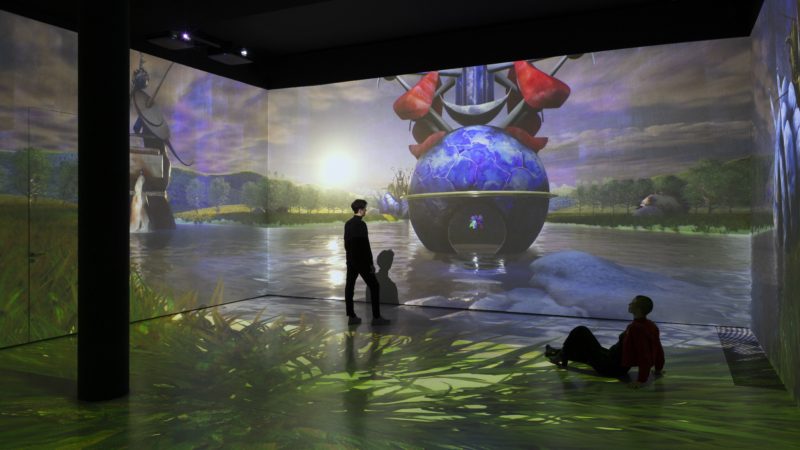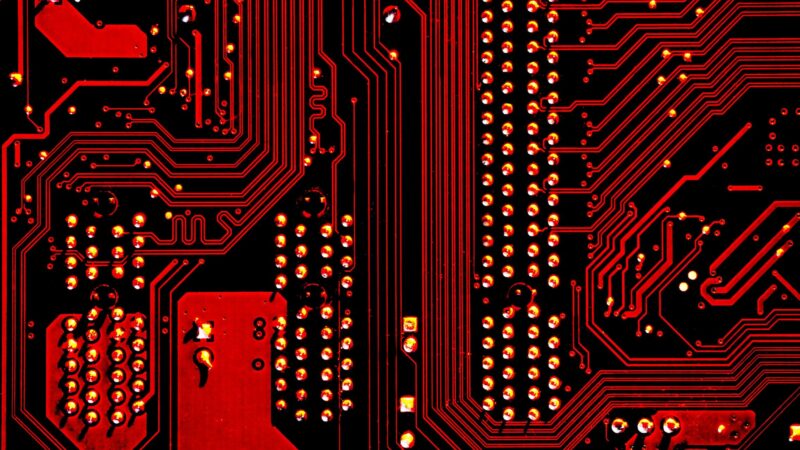Virtual reality and augmented reality are increasingly being used in the arts world, but who is making the most exciting work in this field? Jon Pratty shares some of his favourites.
In The Eyes Of The Animals, by Marshmallow Laser Feast
Imagine standing in a silent forest space; all around is still, cold, damp and quiet. A dark, globe-shaped helmet is gently placed around your head. Your senses are alert to new stimuli; sounds and vibrations engulf you. Shapes emerge, partly organic, partly diagrammatic. A journey develops, hinted at by millions of shards of code, and you can feel yourself growing up, through and out of tree roots and leaves, taking your place in a landscape equally animated and experienced by animals, organisms and spores.
This is what it might be like to experience In The Eyes Of The Animals, a critically-acclaimed Virtual Reality piece made by Marshmallow Laser Feast in 2015. Commissioned by Abandon Normal Devices festival and The Space, and staged in Grizedale Forest in Cumbria, the piece is regarded by critics as a key work in the development of creative and artistic VR work.

Bjork’s digital show at Somerset House
The Bjork Digital show at London’s Somerset House, in September 2016, explored mixed media and programmatic content synchronised with the Icelandic maverick’s music, conceived alongside the visual experience. The show generated a media sensation and was a chance to see recent pieces including Black Lake, commissioned by MoMA in New York. If you wanted to see go deeper into the world of Bjork, Mouthmantra VR took the viewer inside the singer’s mouth while she performed, distorting and reshaping the space. Though the show is over, Somerset House offers glimpses of the extraordinary work on its website.
Modigliani at Tate Modern
The VR element to the major Modigliani exhibition at Tate Modern (November 2017 to April 2018) is an intensely scholarly and detailed look at the studio of a painter, recreating the objects, surfaces, interior architecture and works of art created within it. Each of the objects and works of art was programmatically constructed by VR partners Preloaded; this is not an animated 360 degree video of a surviving space, rather these are precisely modelled 3D objects, rendered digitally and built into a faithfully researched environment that is as close as possible to the real artist’s workspace. Tate has made a fascinating video about the making of Modigliani VR and one gets a real sense that the project deserves a longer life once the physical exhibition closes.
Tim Peake VR Experience at the Science Museum
Space and science fans can visit the Science Museum right now and sample just a bit of what astronaut Tim Peake went through when he re-entered earth’s atmosphere from his mission to the International Space Station in 2016. The Tim Peake VR experience is the museum’s first permanent VR exhibit, costs £7 and uses Samsung Galaxy 7 phones hooked into simple Gear VR headsets. Like the Tate Modigliani VR production, this is real coded VR and took 100 computing stations a month to render, which probably used more processing power than the Russian re-entry capsule possesses.
The Kremer Museum VR Experience
While some museums, such as the Smithsonian, use VR to guide viewers around their galleries, others, such as the Kremer Collection in the Netherlands, go further, trying to imagine how the perceived architecture of the virtual space can affect the user experience. The Kremer Museum, which will launch in 2018 using Google Daydream headsets, is a good example of how new thinking about the VR user experience might attract broader audiences, who might not initially be receptive to headsets and hand controllers, but who can learn to navigate and enjoy unfamiliar digital spaces.
Whilst The Rest Were Sleeping by Simon Wilkinson, a.k.a Circa69
Other artists are making more complex narrative pieces that rely more on the potential of platforms such as the HTC Vive to tell stories that require viewer interaction to reveal the arc of the tale. British artist Simon Wilkinson – Circa69 – does this with his recent work, Whilst The Rest Were Sleeping (2017), a mixed reality experience which also involves live music. Wilkinson’s work has evolved from music and video; he was one of the original ‘scratch video’ artists in the 1980/90s and has toured extensively worldwide with multimedia productions of his own.
Best of the rest:
Weaving A Better Future: good, low-budget VR project from the Canadian Museum for Human Rights
Doghouse, an early theatre experiment using Oculus Rift technology
Ai Weiwei at the Royal Academy: one of the best early examples of a national gallery 360 project, co-commissioned by The Space.
Frogman, from Curious Directive, a really eclectic UK VR theatre company.
How useful was this resource?




